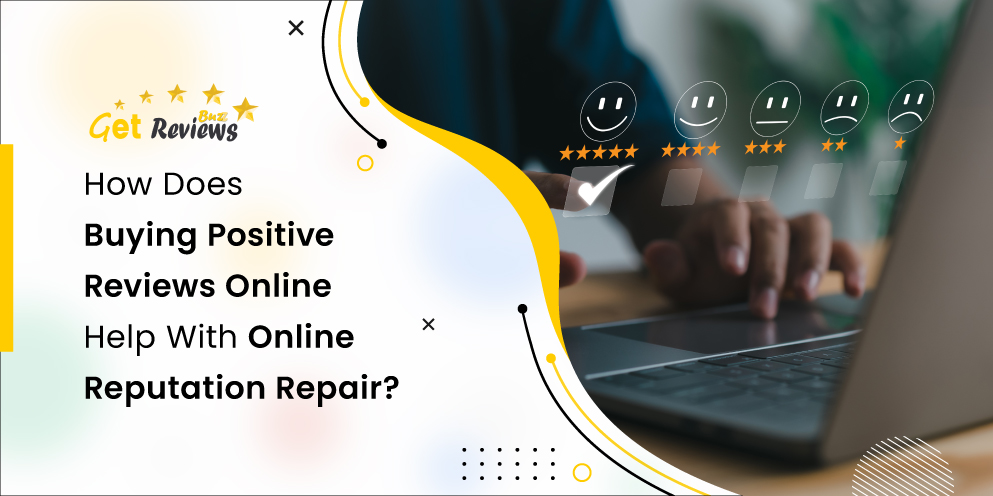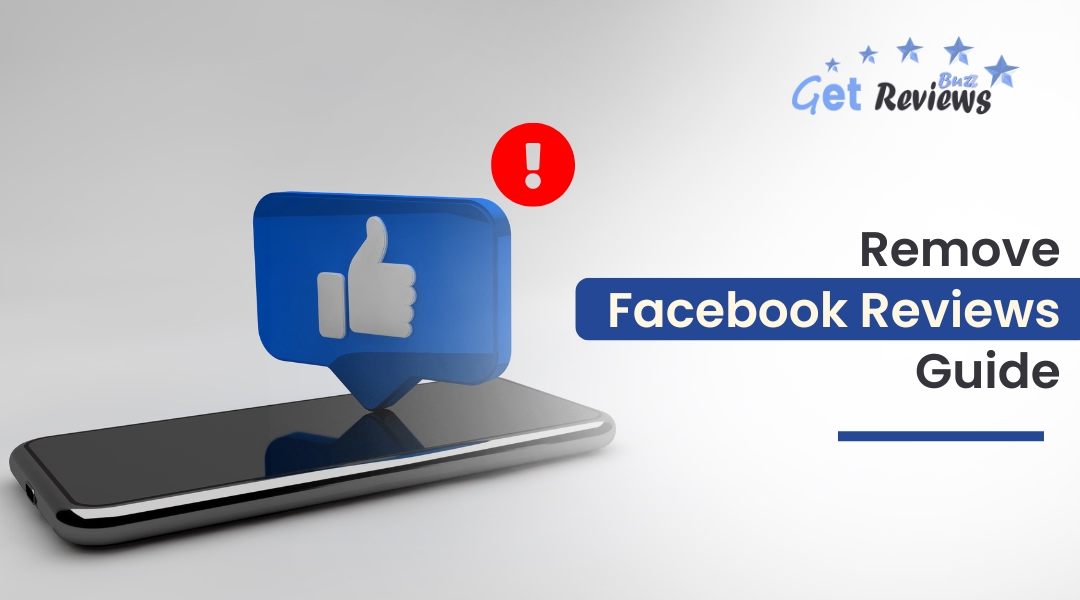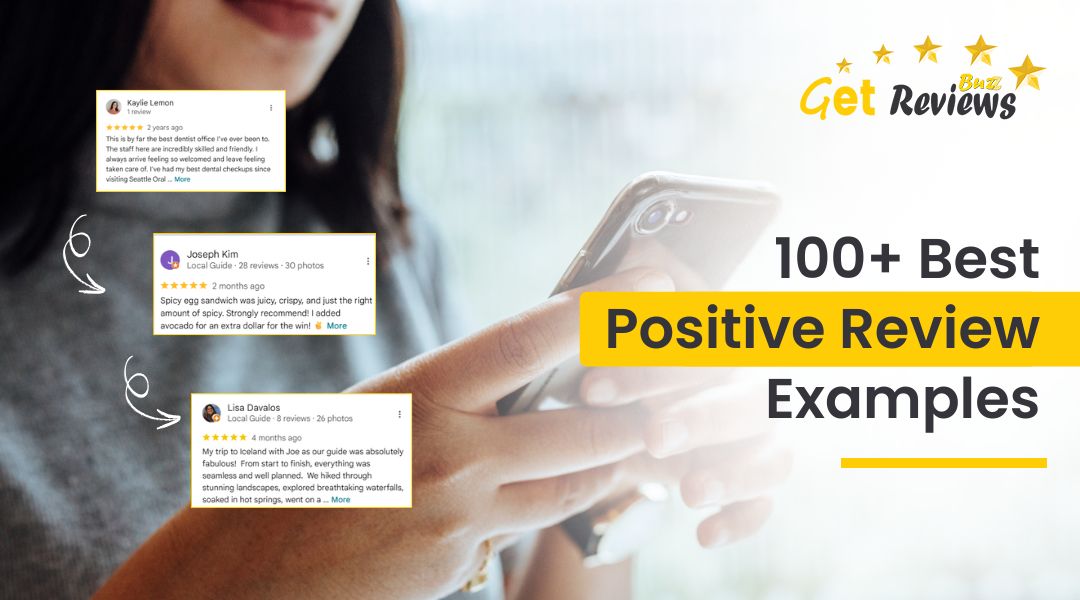One of the most important marketing objectives for any business is to increase brand recognition and awareness. The reason is that consumers prefer to purchase brands they recognize. Shoppers even display some degree of loyalty to brands, which benefits businesses in the long run. Social media has made it easier than ever to build a brand via social media. A major advantage of social media over traditional media is that it allows you to reach people much faster and much easier. As an added bonus, your audience will become aware of your brand even when the audience isn't thinking about it. You must stay abreast of new social media trends in your industry to survive in a competitive market. Almost seventy-two per cent of companies use social media data and leverage social media optimisation to make business decisions. How can you ensure that your business is doing everything possible to succeed and stand out from the competition? The answer is by adopting the latest SMM trends in 2022. The following are 15 things you need to know while creating your social media marketing strategy.
Instagram Marketing Success Depends on Reels
Instagram's head, Adam Mosseri, has stated that users are asking for more entertaining video content on the platform. For businesses to effectively market on the platform in 2022, they need to begin embracing the shift as soon as possible. Video now needs to become a core component of your strategy - but simply recording a video and displaying it is not enough. To stand out in the current digital marketing landscape, a campaign must be creative, innovative, and entertaining. You should keep in mind that your audience's attention span has gotten shorter and shorter as time goes on when incorporating more video content into your marketing strategy. With more and more people looking for quick and new content, your Instagram marketing strategy should align with this by utilizing Instagram Reels and short entertaining videos.
Businesses will strive to reach new audiences through social media.
Researchers have found that marketers' social media strategies had three main objectives in 2021:
Nevertheless, 76% of marketers expect their goals to change in 2022. As we enter 2022, the following are the primary marketing goals:
The majority of consumers had to change their purchasing habits to online-first purchases during the pandemic. Consequently, as we enter 2022, brands should be thinking of ways to reach new audiences through social media, foster stronger relationships with existing customers, and improve customer service to ensure long-term customer loyalty. Keep posting regularly on social media, capitalize on trends and buzzy content, and invest in high-quality content to strengthen your social media presence. Also, you can build stronger relationships with your audience by using interactive elements like polls, Q&As, and live videos.
The number of social media hires will increase.

Brand awareness isn't the only purpose of social media either. Social media can also generate revenue for your business. Seventy-nine per cent of people say user-generated content on social media significantly influences their purchasing decisions. Therefore, you'll see more companies hiring professionals to handle social media in 2022 as opposed to tagging social media to a busy marketing team. Engaging your online audience should be a priority if you haven't already hired a social media community manager. It's worth it if your audience is eager to engage with your brand through social media trends. The tone, voice, and conversations behind your brand are managed by these managers.
User-generated content will continue to be popular

Brands using the monetization of users’ content is no new trend. The only change is that adoption rates are increasing as marketing companies use UGC. Some companies, such as Daniel Wellington, are able to get customers to create content by adding tags to their pages.
Instagram and Twitter will be more important to businesses in the B2B space.
Many marketers are still seeing ROI increases across Instagram and Twitter, even though the platforms are not new. In terms of Instagram, users spent an average of 30 minutes per day on the app between 2019 and 2020, an increase of 14%. Comparatively, this is the fastest-growing social media platform. Marketers will continue to invest in Twitter and Instagram as the platforms continue to succeed in 2022. Take a look at the platform(s) that are already serving your audiences in 2022 and consider where you can invest to increase ROI.
Millennials will become influential marketers by 2022.
The pandemic accelerated the growth of unfiltered (or nonscripted) content, as well as micro-influencers and nano-influencers - such as micro-influencers and nano-influencers. When the pandemic hit, many people trusted influencers more than brands. Influencer marketing will continue to be a strong avenue to explore in 2022, so explore it. In the future, we'll see more influencer marketing trends partnerships being used to increase businesses' sales as the alignment between social media and e-commerce strengthens.
The sophistication of social advertising will increase.

In the upcoming year, you will see " the death of the third party cookie" due to Google's plan to phase out cookie tracking by 2023 - meaning many marketers will need to adjust their existing strategies to incorporate social media advertising. The good news is that there are plenty of highly effective advertising options and social media trends that do not rely on third-party cookies. Some examples include user-generated content, targeted and personalized advertisements across social media platforms, email marketing, and retargeting through search engines.
Social Audio will become more popular
As one of the most interesting social media trends, Club House became a popular attraction since its launch in 2020. On July 20, 2018, Facebook officially launched its Live Audio Room podcasting app and e-news site for free to consumers. But brand awareness is on the increase. 73 % of businesses reported they were preparing a Social Media Strategy for 2022 by 2025. According to one survey, hosting a video Livestream was the most popular marketing tactic for influencing leaders. Nonetheless, the trend is still unknown to small firms and is especially important considering the lack of the most economical method.
Demand for social selling will increase.
Since a few years ago, social platforms have been working hard to create native shopping experiences that users can access without ever having to leave their sites. Think about Instagram's Shoppable Stories, which allows you to purchase products just by tapping on them. In order to provide users with a seamless experience, other platforms have invested in native advertising. For instance, TikTok offers a format known as Spark Ads, which allows brands to increase the profile of their organic content. Brands will increasingly use social selling to reach users whenever - and wherever - they're ready to purchase in 2022. Let your users buy from you on Instagram if they prefer it.
Content that consumers can snack on will become more popular.

With the rise of TikTok and Instagram Reels, continued engagement on Stories on Facebook, Instagram, and Snapchat, and brands creating other short-form or snackable pieces of content to educate consumers about their brand in 2020, we can expect growth in short-form, bite-sized content. As While social media trends attention spans continue to shrink and more people scroll endlessly through their feeds when they are bored at home, snackable content won't go out of style anytime soon.
Increase in the use of social media for customer service
Historically social media was used to connect with social networking sites or to upload videos. The old days are over, but with changing social media trends, it has become more than usual. Originally the site was used as a store, product discovery platform, and now for customer support channels. Many companies are using social media to provide customer service to their customers. The transition was gradually made because brands noticed many of them were contacting them through social media. Usually it's because of poor response on another channel or because it's a direct way to get to brands.
Instagram Feature Overwhelm Forces Strategic Focus
The way Instagram has developed a new eCommerce platform is clear. The TikTok-like feature will be introduced in 2020 to support shortform video, a number of influencers and a host of other features and with all of these things it will overwhelm us slightly. Instagram is often perceived as a part-time job in a small business (instead a permanent job). This overwhelm is quite real: it forces a number of businesses out of social media by using other channels and motivates others with smarter strategies in their social networks.
Video content will continue to dominate
Video content remains an engaging content form. In 2022 80 % of all online content will have video content. It’s clear that using video can make a big difference in how people view social media platform. You may be considering adding videos to an existing website if you have no content strategy. Video will soon dominate social media and those who ignore this will find it hard. What we should be thinking about for the future is that longer-term content is no longer necessary.
LinkedIn leans towards video content

LinkedIn was born in 2121 and turned 17 in 2020. Traditionally viewed mainly as a professional networking platform, 2019 represents an important time in which the focus was shifted toward creator-based. LinkedIn's new Creator Mode recognizes the contributions of a creator to the platform. A platform traditionally used as a forum where job candidates can talk can add another dimension. More members can publish their own newsletter via creator mode via the article feature.
Instagram and Twitter Will Remain Popular
Though many things have been said regarding Twitter and TikTok, Instagram or Twitter won't change much until 2022. Tweets from Instagram are reportedly expected to gain the most importance from B2C companies. The majority of respondents said that they planned to expand Twitter investment in 2018 compared with 52% that planned to expand Instagram in 2022. In a recent survey, 49% of B2B brands were considering expanding their presence on Facebook.
How to make sure that your SMM strategies work?

Identify goals that are relevant to your business
Let's start by asking a quick question: “So what are you looking for from social media?” Starting with your goals is the first step in planning your social media strategy. Some reports indicate the most common goal for social media is to increase brand awareness (58%) and increase community engagement (41%). Defining your social goals is the first step to achieving them, regardless of whether you want a larger following or a more active community. You will need to dedicate time and energy to your campaigns or your social media marketing strategy will not work.
An example of a social media goal for 2022
The most important thing is to set realistic goals and follow social media trends. By the way, I stressed the word "realistic." Whenever possible, try setting smaller goals that help you scale your social efforts in an affordable and reasonable way. These examples of business goals are suitable for all sizes and types of businesses.
Increasing brand awareness.
This means promoting your business. Avoid only publishing promotional messages to create genuine and lasting brand awareness. Promote your values and personality instead.
Lead generation and sales generation.
Customers don't make purchases by accident, whether online, in-store or directly through social profiles. Are you concerned with letting customers know about new products and promotions? Have you integrated your product catalog with social media channels? Does your business run special offers for followers?
Expand your brand's audience.
Your brand must be introduced to individuals who haven't heard of you before in order to gain new followers. Discovering the most relevant conversations around your business and industry is also a part of growing your audience. Without monitoring or listening for specific keywords, phrases or hashtags, it's nearly impossible to dig through your social channels. Your core audience (and adjacent audiences) can be expanded much faster when you stay on top of these conversations.
Engage communities.
In order to keep your followers' attention on social media, it pays to explore new ways to engage them. According to the Index data, 46% of consumers think engaging audiences on social media makes brands stand out. Messages and content should be experimented with. For instance, do you use hashtags and user-generated content? Engaging your audience can be as simple as asking a question. If you give your customers something to do, they can be your best cheerleaders.
Your website will receive more traffic if you drive traffic to it.
It's that simple. Social media can help you generate leads or drive traffic to your website if you're laser-focused on this. By tracking conversions and URL clicks on social media posts and ads, you can better determine your return on investment. It is perfectly acceptable to combine any of these goals as they can help you identify the best networks to tackle as well. Avoid overcomplicating your
social media marketing strategy by putting too many objectives in it. Make sure your team is focused on just one or two.

Identify your target audience by conducting research
It's bad for marketers to make assumptions. It is estimated that only 55% of marketers use social data to improve their understanding of their target audiences, making it a huge opportunity for both leaders and practitioners. To make your social media marketing more effective, you already have access to information about your audience. The key is knowing where to look.
You will find different audiences on different platforms
As an example, consider the demographics of social media today. Those numbers will let you know which networks you should be targeting and what type of content your brand should be publishing. In your social media marketing strategy for 2022, you should keep these points in mind:
Be careful not to overextend yourself. Make sure your target audience is already active on your target networks.
Decide which metrics and KPIs are most important to you
Data-driven social media treare effective no matter your industry or goals. Those metrics should be focused on. Do not focus on vanity metrics, instead dig into data that is aligned with your goals. In terms of metrics, what do we mean? Take a look at the breakdown below:
Reach out. A post's reach is the number of unique users who saw it. Which of your posts actually makes it to users' feeds?
Click-throughs. This is how many people click through to your content or account. Understanding what drives curiosity or motivates people to buy is dependent on tracking clicks per campaign.
The engagement process. Multiplying total social interactions by the number of impressions. This information can shed light on how well you are perceived by your audience and their willingness to engage.
The hashtag performance. Which hashtags did you use most often? What hashtags did you associate most with your brand? Answering these questions can help you focus your content moving forward.
Stay up-to-date on social media platforms
The importance of being on time for marketers has arguably never been greater. Your followers expect new content from you on a regular basis, as well as to always be available to them. It's not always realistic to expect customers to work according to your schedule. It can be challenging to stay on schedule when you're short on resources or working with a small team.
Engage your followers at the right time
Are you available to engage and interact with customers when? There might be a recommendation to post late at night, for instance. When your team is not present to communicate, what purpose does posting at the "preferred" time serve? If you tweet or post a product question or concern, try to ensure your social media or community managers can answer it. Be sure to review when is the best time to post on social media. Engaging after posting is equally important and an important social media trend to follow.
Answer your customers' questions and shout-outs immediately
You want to respond quickly to your customers. 47% of respondents believe a top-performing brand on social media is characterized by strong customer service. You can't ignore these elements when building your community. To make sure opportunities for engagement aren't missed, it takes effort. The only way to gain respect as a brand on social media is to be present and talk to your audience. For brands looking to increase audience awareness, social customer care is key-words travel quickly about great service. Because social algorithms change, organic content has an increasingly difficult time reaching most of your audience. In order to send more prospects down your marketing funnel, you should not ignore those who engage with your content.
Identify what's working, what's not, and how to improve
Your social media strategy should now be clear in the big picture. Throughout the year, you should be able to modify your strategy as needed. You will never know how one campaign performed compared to another without continuously tracking your efforts. You can gain a better understanding of your social media activity by taking a bird's eye view. If your content is not performing as well as it should, you should adjust your campaigns.
Engage other departments in the process
In terms of understanding customer sentiment, social media teams have a unique advantage. Your brand is listening to you through social media. This insight goes beyond just influencing marketing strategy. The results can be transformative. Despite this, only 39% of marketers use social data to support other departments, according to Index data. Teams that excel at cross-departmental collaboration in 2022 will approach it with enthusiasm and determination.
How to Optimize your Social Media Profiles?
You don't need to be afraid of optimization in digital marketing. The term may conjure up thoughts of search engine optimization (SEO) and strict, restrictive keyword requirements. You might think that optimization means removing all creativity from your marketing. But what is the reality? Search engine optimization (SEO) differs from SMO in many ways. While most businesses are using social media, they often fail to take advantage of simple changes that can have a substantial impact on their performance.

Despite that, “What is the point of social media optimization?”
Essentially, social media optimization (SMO) means that businesses should analyze and audit their social media content and accounts to ensure they are following the best practices for social media marketing. SMO involves a fairly straightforward concept. SMO requires tweaking and testing in the same manner as SEO or CRO (conversion rate optimization). What's the point of bothering? In spite of the fact that many brands make their social efforts seem effortless, the reality is that top-performing accounts pay attention to the finer details of optimization. Here are three key advantages:
Our team has seen firsthand how social media performance is being held to account for more and more marketers. As a result of optimizing your content, you increase the odds that you will hit your KPIs and simplify your own work by establishing a process for fine-tuning it.
These are the 6 best social media optimization strategies you absolutely need to try
Let's move on to the good stuff! Listed below are six aspects of social media optimization that businesses should pay extra attention to.
Optimizing your account
The most important thing to remember is that your brand accounts need to fall in line with your company's goals. To accomplish this, you should conduct an audit of your social media profiles with a view to marketing and branding. Here are a few items to take into account when you are optimizing an account:
If you think of your social media presence as a gateway to your products and brand, then you might find it helpful. For the sake of keeping customers engaged and preventing confusion, consistency is key when it comes to the first time they encounter your business.
Search engine optimization
In today's digital age, brands should figure out how to optimize their social media for search. Search results for Google are increasingly featuring social profiles. Recently introduced features such as Instagram's updated search feature highlight the importance of using keyword-rich content across posts and accounts. However, there's no need for you to stuff your posts with keywords to make them more searchable. You can add industry-specific and brand-specific keywords to your social content by performing keyword research. Next, implement key search optimization techniques involving social media, such as:
Optimizing the content strategy
There is no shortage of social media posts that businesses can make. It is important to note that your content strategy shouldn't be a free-for-all. By coming up with an organized strategy sooner, you'll be able to generate ideas and posts more easily. You can optimize your content strategy by:
It is important to fine-tune your content strategy optimization times. You may need to scale back or ramp up your activities depending on your analytics. You can begin by establishing a baseline based on the points above, however.
Optimizing individual posts
You should consider how to optimize individual social media posts after establishing your grand-picture content strategy. The following points should be considered when optimizing posts that do need special attention:
Optimizing links
The following is a social media optimization aspect that often goes unnoticed. Links shouldn't be dropped at random by businesses on social media. Link optimization lets you track your customers' behaviors when they click through and identify the most effective social content. To sum it up:
In order to measure the ROI of your individual posts and your social media efforts as a whole, you must optimize your links. In order to measure the ROI of your individual posts and your social media efforts as a whole, you must optimize your links.
Optimizing performance
A brand's social media performance can be improved through optimization. You can optimize your social content performance by monitoring what works (and what doesn't) through analytics. Here are a few tips to get you started:
The use of tools like Sprout can help your social media performance be monitored and improved. It is possible to keep a constant eye on your most important numbers with our platform, which covers all the points above.
The "next big thing" is social media marketing, work with us to leverage its potentials
Digital marketers cite social media as one of the most effective tools available. Because social media marketing is so effective in quantifying your business' exposure, it's becoming increasingly necessary to allocate a portion of your online marketing budget to it. When it comes to giving your brand a boost and padding your wallet at the same time, social media is the best option. While it is still in the spotlight, it is a temporary yet powerful trend that must be capitalized on. Using a few hours of your time each week, you could increase your business's recognition, traffic, and sales with virtually no cost. It's true! The majority of marketers claimed social media gave their company ample exposure, and that's not its only benefit. As a result, social networks are now a serious part of every marketing strategy, and those who do not implement this cost-effective resource are missing out on an opportunity to gain a competitive edge. Think again if you thought Social Media was only for consumer-focused brands! B2B businesses can use social media to increase brand awareness, get more website traffic, and feed their hungry sales teams with a large number of leads creating a fat sales pipeline. We can grow your brand through social media no matter who you are or what you sell. Our services combine the best website design and web development with the best social media marketing strategy to promote your brand to the maximum extent possible. We are therefore your best choice for social media marketing. By partnering with our excellent Social Media team and taking advantage of our Social Media Optimisation and marketing services your business will be able to get more brand awareness, more traffic, and more leads. In addition to Facebook, Twitter, LinkedIn, Youtube, Instagram, Google Plus, we also specialize in other social media sites.
 Brand awareness isn't the only purpose of social media either. Social media can also generate revenue for your business. Seventy-nine per cent of people say user-generated content on social media significantly influences their purchasing decisions. Therefore, you'll see more companies hiring professionals to handle social media in 2022 as opposed to tagging social media to a busy marketing team. Engaging your online audience should be a priority if you haven't already hired a social media community manager. It's worth it if your audience is eager to engage with your brand through social media trends. The tone, voice, and conversations behind your brand are managed by these managers.
Brand awareness isn't the only purpose of social media either. Social media can also generate revenue for your business. Seventy-nine per cent of people say user-generated content on social media significantly influences their purchasing decisions. Therefore, you'll see more companies hiring professionals to handle social media in 2022 as opposed to tagging social media to a busy marketing team. Engaging your online audience should be a priority if you haven't already hired a social media community manager. It's worth it if your audience is eager to engage with your brand through social media trends. The tone, voice, and conversations behind your brand are managed by these managers.  Brands using the monetization of users’ content is no new trend. The only change is that adoption rates are increasing as marketing companies use UGC. Some companies, such as Daniel Wellington, are able to get customers to create content by adding tags to their pages.
Brands using the monetization of users’ content is no new trend. The only change is that adoption rates are increasing as marketing companies use UGC. Some companies, such as Daniel Wellington, are able to get customers to create content by adding tags to their pages.  In the upcoming year, you will see " the death of the third party cookie" due to Google's plan to phase out cookie tracking by 2023 - meaning many marketers will need to adjust their existing strategies to incorporate social media advertising. The good news is that there are plenty of highly effective advertising options and social media trends that do not rely on third-party cookies. Some examples include user-generated content, targeted and personalized advertisements across social media platforms, email marketing, and retargeting through search engines.
In the upcoming year, you will see " the death of the third party cookie" due to Google's plan to phase out cookie tracking by 2023 - meaning many marketers will need to adjust their existing strategies to incorporate social media advertising. The good news is that there are plenty of highly effective advertising options and social media trends that do not rely on third-party cookies. Some examples include user-generated content, targeted and personalized advertisements across social media platforms, email marketing, and retargeting through search engines.  With the rise of TikTok and Instagram Reels, continued engagement on Stories on Facebook, Instagram, and Snapchat, and brands creating other short-form or snackable pieces of content to educate consumers about their brand in 2020, we can expect growth in short-form, bite-sized content. As While social media trends attention spans continue to shrink and more people scroll endlessly through their feeds when they are bored at home, snackable content won't go out of style anytime soon.
With the rise of TikTok and Instagram Reels, continued engagement on Stories on Facebook, Instagram, and Snapchat, and brands creating other short-form or snackable pieces of content to educate consumers about their brand in 2020, we can expect growth in short-form, bite-sized content. As While social media trends attention spans continue to shrink and more people scroll endlessly through their feeds when they are bored at home, snackable content won't go out of style anytime soon.  LinkedIn was born in 2121 and turned 17 in 2020. Traditionally viewed mainly as a professional networking platform, 2019 represents an important time in which the focus was shifted toward creator-based. LinkedIn's new Creator Mode recognizes the contributions of a creator to the platform. A platform traditionally used as a forum where job candidates can talk can add another dimension. More members can publish their own newsletter via creator mode via the article feature.
LinkedIn was born in 2121 and turned 17 in 2020. Traditionally viewed mainly as a professional networking platform, 2019 represents an important time in which the focus was shifted toward creator-based. LinkedIn's new Creator Mode recognizes the contributions of a creator to the platform. A platform traditionally used as a forum where job candidates can talk can add another dimension. More members can publish their own newsletter via creator mode via the article feature. 





























.jpg)




